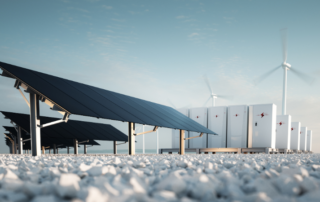Microgrids: Modernizing Energy Systems for Reliability and Efficiency
As the demand for resilient and sustainable energy systems grows, microgrids are emerging as a transformative solution to modern energy challenges. This article delves into the concept of microgrids, their types, benefits, challenges, and their potential to shape the future of energy systems.
Demand-Side Energy Management: Enhancing Efficiency and Cutting Costs in Commercial Buildings
Demand-side energy management offers commercial buildings a pathway to reduce costs and enhance operational efficiency while supporting sustainability goals. By optimizing energy consumption and leveraging advanced strategies, businesses can achieve significant savings and contribute to a more resilient energy grid.
Optimizing Power with Hybrid Energy Solutions: Merging Renewables, Storage, and Traditional Sources for Reliability
Hybrid energy solutions merge renewable sources, energy storage, and traditional power generation to provide a balanced, reliable energy supply. As businesses navigate the energy transition, these systems offer flexibility, cost savings, and a critical step toward sustainability.
Understanding Power Purchase Agreements: A Complete Guide for Energy Consumers and Investors
Power purchase agreements (PPAs) are transforming how businesses procure energy by offering long-term stability, cost savings, and direct access to renewable power. By understanding the benefits and complexities of PPAs, energy consumers and investors can make informed decisions in today’s evolving energy markets.
Exploring Global Energy Investment Trends: Insights for Commercial Buyers and Stakeholders
Global energy investment trends are driving innovation in renewable energy, grid modernization, and sustainability. Understanding these trends empowers commercial energy buyers to capitalize on opportunities, mitigate risks, and align with the evolving energy landscape.
Decarbonizing Your Energy Portfolio: Actionable Strategies for Businesses
Decarbonization is a critical strategy for businesses aiming to achieve sustainability, reduce emissions, and align with regulatory requirements. By implementing actionable carbon reduction strategies, companies can meet net-zero goals and remain competitive in the clean energy era.





